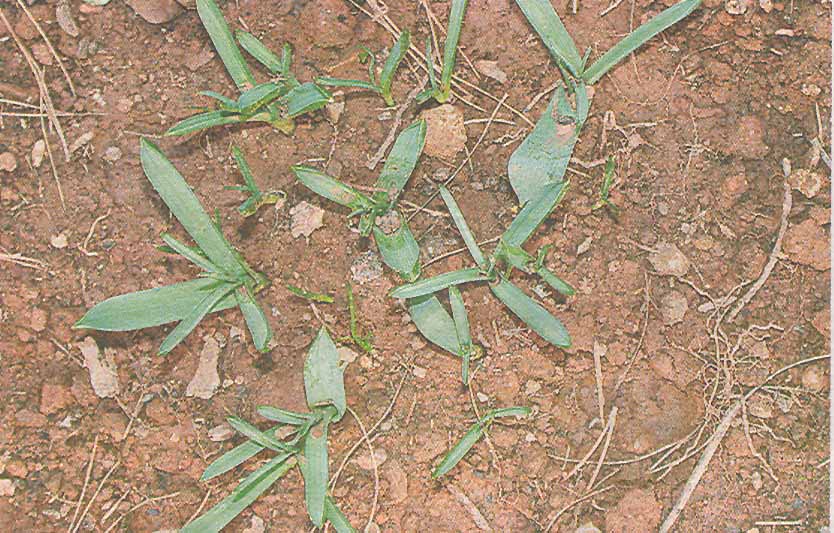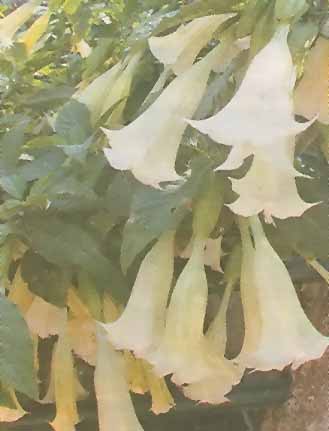 |
||
|
Food for flowers |
||
|
Enhancing the nutrients in your soil results in stronger, healthier plants. Here's how to get the benefits without drowning your garden in chemical fertilizers By Jennifer Gay |
 |
|
|
At risk of being an "organic matter" bore; the issue of soil improvement comes up almost daily in the course of my work, quite simply because many of the soils in. Greece are nutrient poor and lacking in substance. While we may look around and see many plants in the wild coping with poor, rocky, thin, soils, "the situation is rather different in most gardens. We demand a much higher standard of appearance in plants in a garden situation - in an open expanse of wild vegetation we may not even notice perhaps 20 percent of the plants are not in the best shape. However in gardens, most people want their plants to look healthy and robust. Therein lies one of several very good reasons for improving the soil. You well may ask how do you actually improve soil and what other benefits there might be besides healthier plants. Soil improvement is basically a process of adding in organic matter - decaying and dead plant material. Fallen leaves, kitchen waste, grass cuttings or prunings are all raw material for organic matter. Exposure to a range of micro-organisms composed of soil animals, bacteria and fungi results in a breakdown that will continue over some months. The material loses colour and bulk turns brown and slowly breaks down into smaller fragments until it looks like dark, crumbly material, similar to peat or potting compost. The speed of the breakdown depends on many factors: temperature, moisture and whether the material is woody, or soft and green. It increases moisture retention on loose, free-draining soils It helps prevents capping on soil surface and encourages water (including rainfall) to soak in rather than run off (invaluable during Greek summer drought and also during heavy winter deluges). As mulch, it conserves moisture and also helps suppress growth of weed seeds that need light to germinate Nutrients contained in the material are slowly released into soil, acting as a natural fertiliser. Its presence also encourages earthworms that further mix and aerate the soil - the organic matter continues to break down to become a fine, very slightly sticky black mass called humus, which has even more useful properties. This substance coats the surface of soil particles and help them clump together to form good crumb structure, further adding drainage and aeration on clayey, waterlogged soils but also improving water retention in sandy soils. Humus can also hold on to certain minerals aIready in the soil or those added as fertiliser, so they're not easily washed away and remain available to the plants. To sum up, humus-rich soil is one that is high in organic matter, dark in colour, with the ability to retain moisture yet let excess water drain away and hold onto nutrients to benefit the plant. For me, choosing whether to add organic matter or quick-release chemical fertilisers to the soil is the difference between choosing real food or vitamin pills. In a well-balanced diet, real food offers real nourishment, and should give the body everything it needs. In the same way, an annual addition of organic matter gives the soil life, health and "body" -long-term nourishment rather than a short term quick fix. And well-nourished soil means well-nourished .plants. What to use Getting hold of organic matter is a challenge in Greece. While countries with a long horticultural tradition have a range of materials on the market, it is often a problem in the Mediterranean; many local gardeners still rely on chemicals to supply the necessary nutrients. Don't despair, as though you may have to use initiative to get your organic material, there are several possibilities out there. Garden compost Make your own. Kitchen and garden waste comes free and it's simply a matter of constructing a compost bin and managing it. However, you may not produce enough to meet all your needs. Horse, sheep or goat manure Often available free if you can arrange collection, but it will scorch plants if used fresh. Wait until material is black and crumbly. Animal manure may also contain weed seeds and pesticide residues but will possess good supplies of nitrogen that encourages plant growth. Cotton waste Available from cotton farmers on the plain of Thessaly. Only a viable option if ordering in bulk as though the material may be free, you'll have to pay haulage. Like manure you'll need to wait up to a year before it has rotted down sufficiently for use. Cotton waste certainly can't be guaranteed chemical free. Grape harvest waste Again, a good soil texture improver though not particularly nutrient rich. Cocoa shells You may find a chocolate factory which will welcome you.saving them the job of carting away cocoa bean waste. Again best to let it rot down first. Makes good mulch. Olive harvest waste Useful for bulking up other materials, but quite a heavy, oily material to use alone. Peat Widely available in big bales from the Ukraine and Baltic States. Downside is the big question mark over ethics of peat extraction - environmentalists have long campaigned against destruction of wildlife-rich peat bogs. Commercial composts such as Compost Hellas, Greece's first organic material based on waste seagrass, Posidonia oceanica. Contact Compost Hellas on 26710-81009, or email info@compost.gr |
||
|
Flowering now/Perfect pot plant Bearing pendulous, narrowly trumpet-shaped, night-scented flowers to 30cm long, Angel's Trumpets' (Brugmansia sauveolens) is a showstopper. Belonging to the same family as the more pedestrian tomato and potato, Angel's Trumpets is a native of SE Brazil, where it grows in open forests up to 3,OOO-metre altitude, flowering from summer to autumn. It is a large evergreen hairless shrub to about 5 metres in height, the narrowly ovate leaves almost as large as the flowers which are usually white, though rarely pale yellow or pink. Widely cultivated in the tropics, sub-tropics and Mediterranean areas, there are many cultivars of B. sauveolens and these tend to be the most highly scented of all the Brugmansia, especially at night - in the wild its main pollinator are moths, guided to the nectar by the pale luminescent colour and powerful scent. One of the most floriferous of the genus is Brugmansia x candida and its cultivars. |
 Angel's Trumpet |
|
|
Grow from seed in spring or take autumn cuttings about 15cm long and root them in water. Once rooted, plant in potting compost with plenty of extra grit for improved drainage. They enjoy good light but suffer in open hot situations - their large fleshy leaves need lots of water and they wilt in the heat oLthe sun. They recover in the evening but better to plant them in light dappled shade. Cut back as hard as-necessary - they get damaged below 5C - Brugmansia will produce flowers on new growth the next year. |
||
HCS readers can view other excellent articles by Jennifer Gay in the News & Issues and especially the sections of our extensive, permanent archives at the URL http://www.helleniccomserve.com./contents.html
All articles of Athens News appearing on HCS have been reprinted with permission. |
||
|
||
|
|
||
|
2000 © Hellenic Communication Service, L.L.C. All Rights Reserved. http://www.HellenicComServe.com |
||

